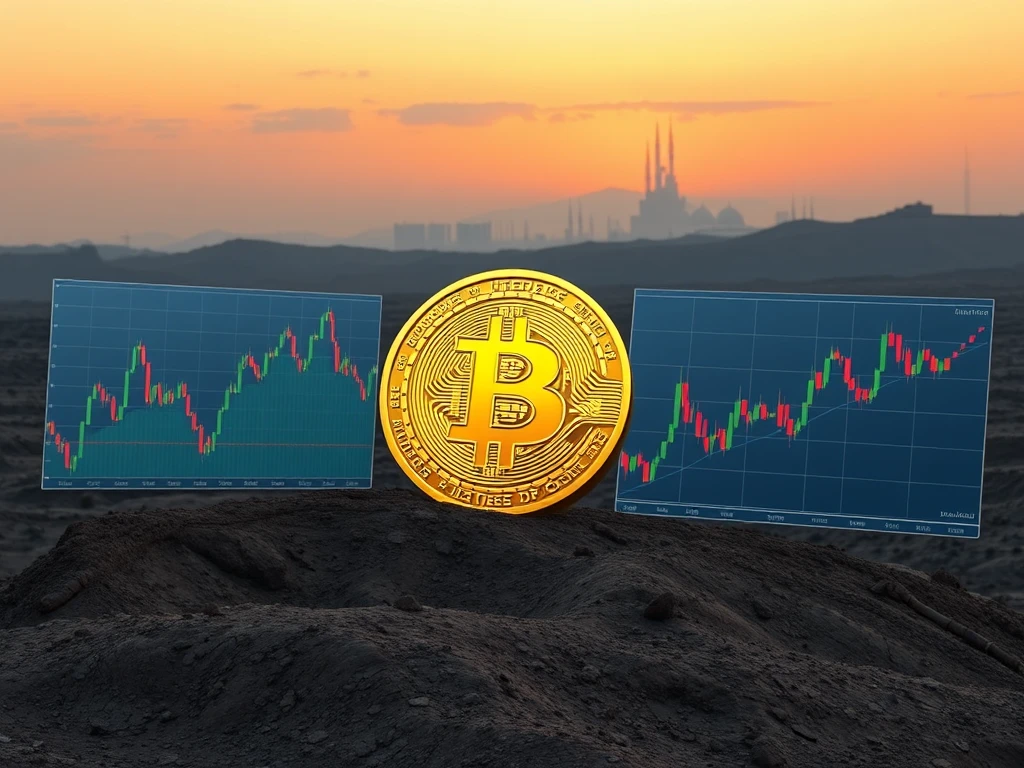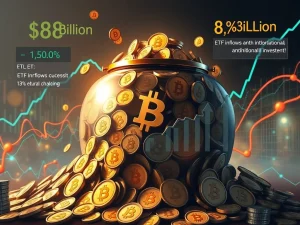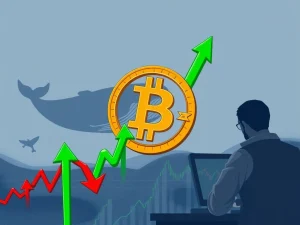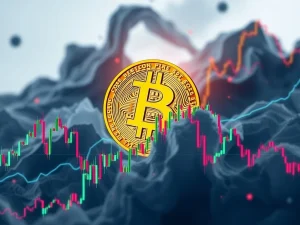Bitcoin’s Surprising Behavior: Why BTC Acts Like Equities, Not Gold, Amidst Middle East Tensions

As geopolitical uncertainties rise, particularly with escalating Middle East tensions, investors often seek refuge in traditional safe-haven assets. Gold, the classic store of value, has responded as expected, surging towards its all-time high. However, the reaction from the crypto market, specifically the Bitcoin price, tells a different story, prompting a closer look at its current market dynamics.
Gold’s Powerful Rally and the Safe Haven Appeal
The price of gold has seen a significant upward movement, reaching $3,450 per ounce recently, just shy of its April peak near $3,500. This rally, amounting to a 30% gain year-to-date, has been fueled by factors like trade tariffs and, more recently, the deepening conflict in the Middle East. Gold’s status as a safe haven asset makes it a go-to during times of economic uncertainty and geopolitical instability. Its traditional role as an inflation hedge further bolsters its appeal when concerns about rising prices emerge.
Bitcoin Price: A Different Trajectory Compared to Gold
In contrast to gold’s robust performance, the Bitcoin price has shown a more modest 13% gain year-to-date. While BTC is also trading below its own all-time high of $111,800 reached in May, its reaction to the recent Middle East events has been different. Instead of mirroring gold’s surge, Bitcoin initially saw a sell-off following news of the Israeli missile strike on Iran.
Why Analysts Classify Bitcoin as a Risk Asset
Several analysts suggest that Bitcoin’s current market behavior aligns more closely with risk asset classes, such as US equities, rather than traditional safe havens like gold. Here’s what experts are saying:
- Tony Sycamore (IG Markets): Believes Bitcoin still trades like a risk asset. He notes that BTC has room to move higher, potentially catching up to US equity futures which rebounded after a recent sell-off. He sees potential for a retest of the $112,000 high and possibly moves towards $116,000 and $120,000 if support holds between $95,000 and $100,000.
- Henrik Andersson (Apollo Crypto): Echoes the sentiment, observing a recovery in both equity futures and Bitcoin after the initial sell-off related to Middle East news. However, he highlights that in the short term, oil and gold are likely to move inversely to equities and Bitcoin.
- Nick Ruck (LVRG Research): Suggests the ‘digital gold’ narrative for Bitcoin is ‘slowly fading’ as it fails to mirror gold’s rally. Traders seem to be prioritizing short-term volatility and liquidity, making BTC more correlated with risk assets than safe havens.
This perspective indicates that while Bitcoin has the potential to be a long-term store of value, its short-term price movements are heavily influenced by broader market sentiment and liquidity conditions typical of riskier investments.
Looking Ahead: Fed Meeting and Market Sentiment
The market is also anticipating the US Federal Reserve’s policy meeting and interest rate decision. While futures markets currently predict no change in rates, any surprises or shifts in economic outlook could impact market sentiment. According to Eugene Cheung of OSL, if risk sentiment changes and investors start looking for alternative stores of value, Bitcoin could see renewed momentum, especially if the Fed meeting outcome aligns with investor expectations. This underscores how macroeconomic factors and central bank policies continue to play a significant role in Bitcoin’s performance, further linking it to traditional financial market dynamics rather than purely safe-haven flows driven by Middle East tensions.
Summary: Bitcoin’s Evolving Role
The current geopolitical climate, marked by escalating Middle East tensions, highlights the ongoing debate about Bitcoin’s role in the global financial landscape. While gold firmly acts as a traditional safe haven, absorbing flows during uncertainty, Bitcoin’s behavior suggests it is still largely perceived and traded as a risk asset, closely tied to the movements of equity markets. This distinction is crucial for investors navigating both the crypto and traditional markets during volatile times. The coming weeks, particularly influenced by macroeconomic events like the Fed meeting, will be key in observing whether Bitcoin’s correlation patterns shift or if its identity as a risk asset solidifies further in the short term.









